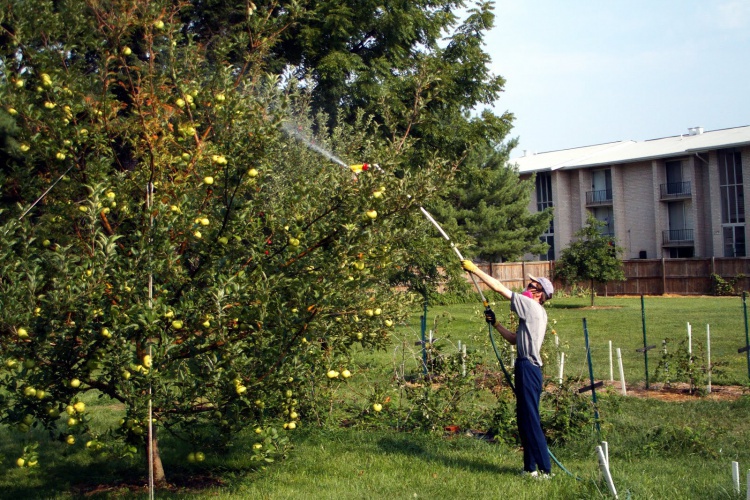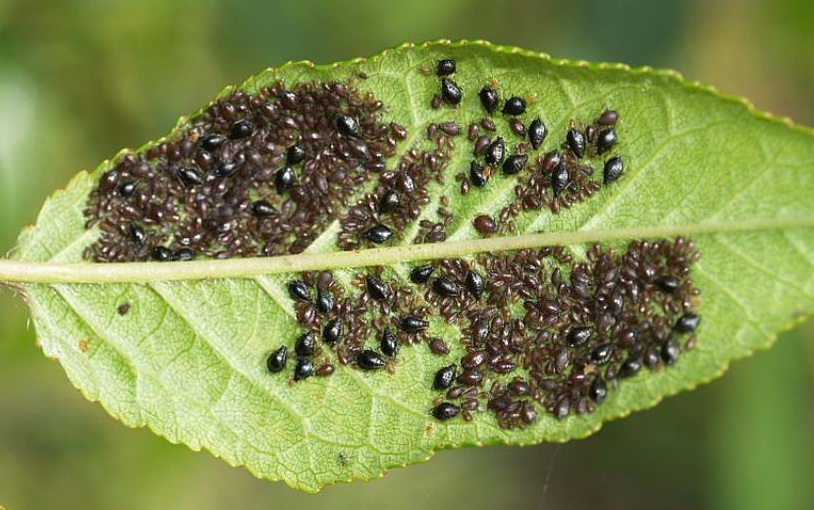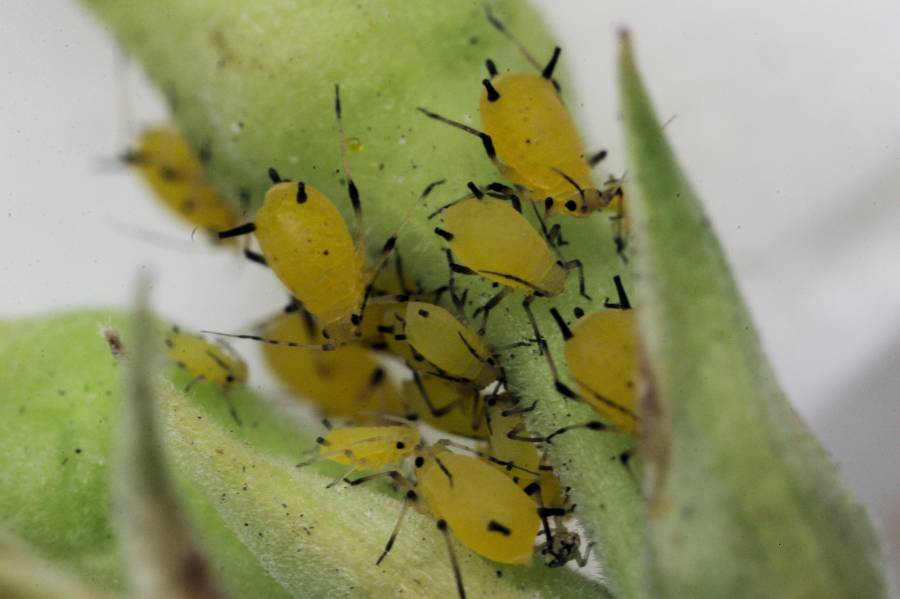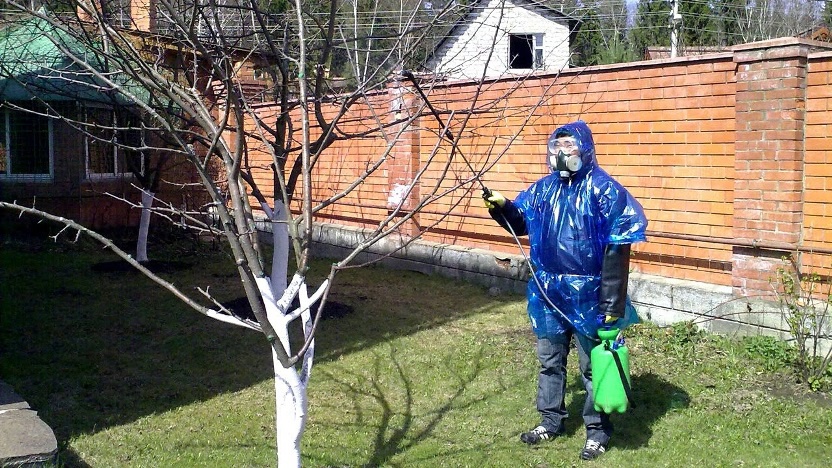Effective methods of dealing with aphids on apple trees
Aphid species
Before moving on to the types of aphids that spoil apple orchards, you should dwell on what aphids are in nature. This is a miniature insect, the body of which rarely exceeds 7 mm. Depending on the species and the plants preferred for consumption, the color of the aphid also varies: light green, dark green, black, gray, orange, light pink.

Aphids belong to the family of phytophages, insects with a proboscis for disrupting the upper covers of plants. One of the key features of this insect species is that in the process of life, they leave padd on the occupied leaves and stems, a substance with a high sugar content, which ants, wasps, bees and flies are not averse to feasting on. Aphids on an apple tree, it is red-headed or gray, comes from the aphid family. Eggs overwinter on the bark of fruit tree branches; in spring, females emerge from the eggs and establish a colony on the selected tree. Their body is about 2 mm long, green with a red head and white antennae, the tubes on the back and the tail are black.
Females produce up to 40 larvae at a time from which females grow without wings, which stick around the lower part of the leaves. In June, a generation of females with wings appears, their color changes - the body is black, and the abdomen is green. It is they who become the parents for the winged and wingless males and females. The peak of development and reproduction of aphids falls on the month of September.
Signs of aphids
It is quite easy to detect the presence of aphids on an apple tree - the leaves curl downward, turn black and dry out. Gradually, red swellings will appear on the leaves, which precede curling. The leaves are covered with a sticky liquid - a pad, onto which ants crawl. In the early stages, the defeat of the tree by aphids is rather difficult to track, since they begin the invasion from the upper young shoots of the tree.

However, over time, there are few fresh leaves for the insect and they go down lower, leaving behind emaciated and dying shoots and leaves. On the lower parts of the tree, it is easier to detect the presence of aphids - you just need to turn over any leaf and you will find dozens of larvae. Ants are also one of the symptoms that can tell if a plant is infected. Also, pests live on the underside of leaves and in buds. Turn the leaf over or open the rolled leaf and you will see insects. In addition to sucking nutrients from the plant, pests are carriers of viral diseases. You should immediately begin to fight against insects using folk remedies or special preparations.
Aphid control methods
So, what are the ways you can fight the hordes of aphids? Use herbal infusions, chemicals, food additives that should be sprayed on the affected tree. It is best to chemically treat the apple tree in the spring, when the buds have not yet blossomed.
This will reduce the likelihood of leaving chemical burns on the leaves, but cause significant damage to the aphid larvae.
200 g of the drug "Nitrofen" is diluted in 10 liters of water, which is used to treat the tree before the buds bloom. It is highly regarded for killing aphid eggs. - You can treat the tree with a 4% solution of the drug "Oleocobrite", which also destroys insect eggs.
The Iskra preparation helps to get rid of insect eggs and young larvae throughout the entire growing season of the apple tree. To prepare a solution in 10 liters of water, dissolve 1 tablet of the drug. Spraying can be done every 3 weeks. Aphid control requires re-treatment of trees, but at the same time so as not to burn the leaves. Therefore, it is recommended to use "safe" drugs: "Iskra", "Decis", "Cypermethrin". Also, subsequent treatments can be carried out with plant infusions, since they cause the least damage to the tree, but at the same time they are quite effective against insects.
Take 500 g of tobacco, 40 g of soap, 20 liters of water. Soak tobacco in 10 liters of water for 3 days, then strain the infusion, dilute with the remaining water, add soap. You can do the treatment with such a solution every one and a half weeks.

Another option: mix 3 cups of wood ash, 40 g of soap, 10 liters of water. After mixing all the ingredients, the solution is insisted for a day. Spray the lower part of the leaves. Thus, it is possible not only to fight pests, but also to carry out foliar feeding of the tree. Ants, as a side symptom of the life of aphids, also require destruction.

You can use the chemicals "Fitoverm", "VDG", "Fufaon". Also, ants do not tolerate a variety of traps that do not harm plants, humans and animals, but at the same time are extremely effective against lovers of free sugar.
The best tools in the line of traps were recognized as "Raptor" and "Kombat". Ants do not like kerosene, so you need to take advantage of this. To prepare a solution in 10 liters of water, mix 400 g of soap, 2 tbsp. tablespoons of carbolic acid and 10 tbsp. spoons of kerosene. The solution should be used to treat the leaves and trunks of apple trees.
Video "Aphids on an apple tree"
On the recording, an experienced gardener talks about how to recognize aphids on an apple tree and how to effectively deal with it.

